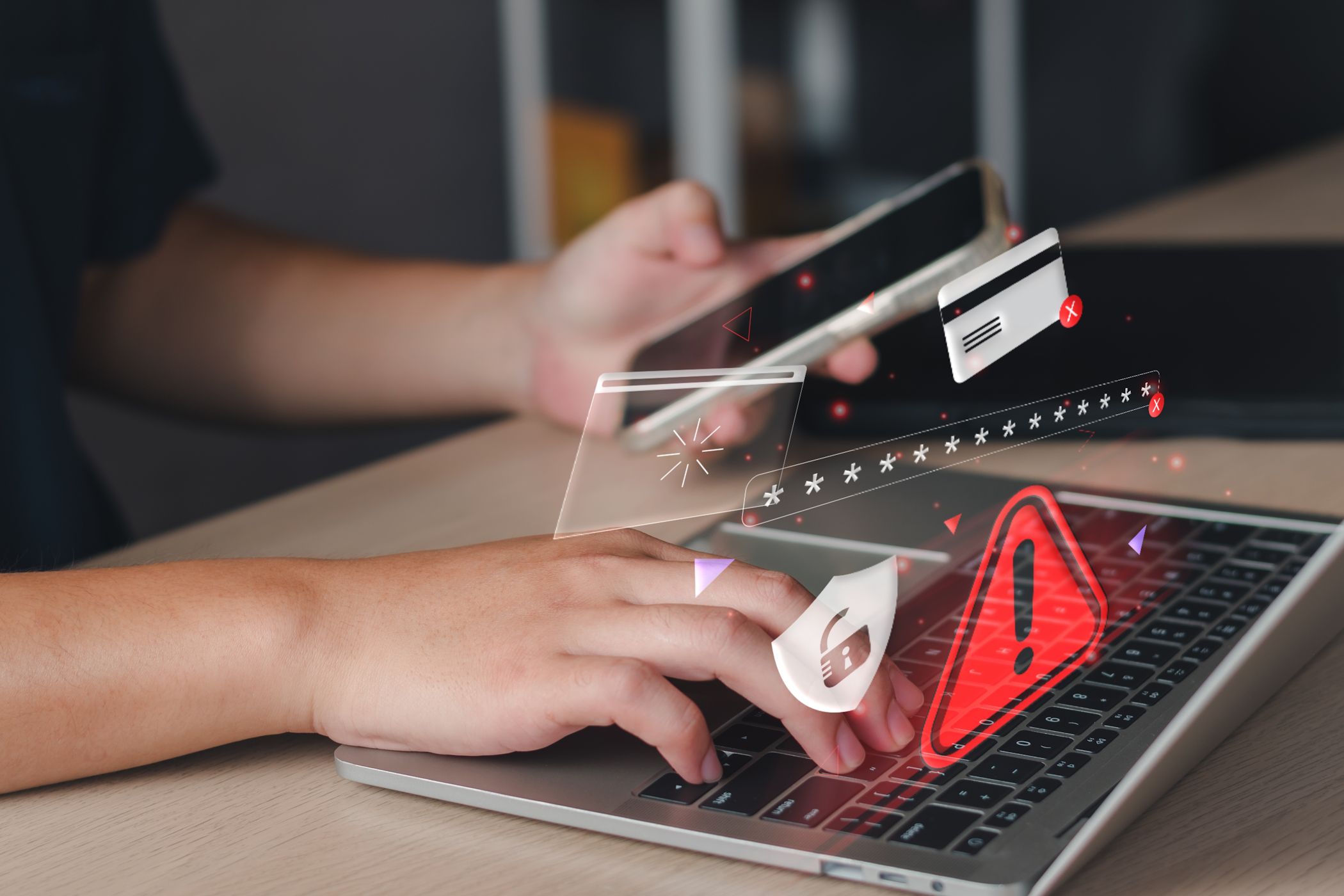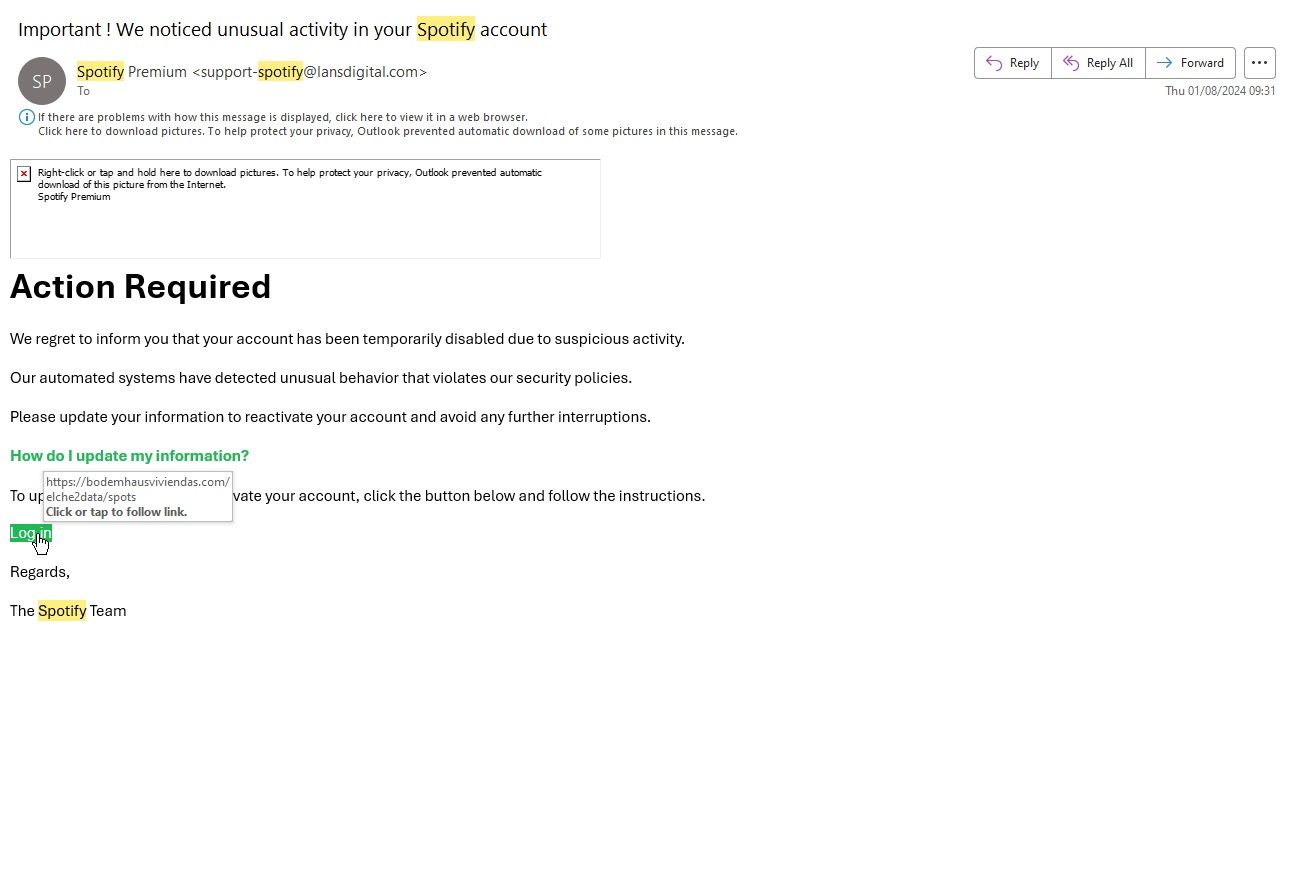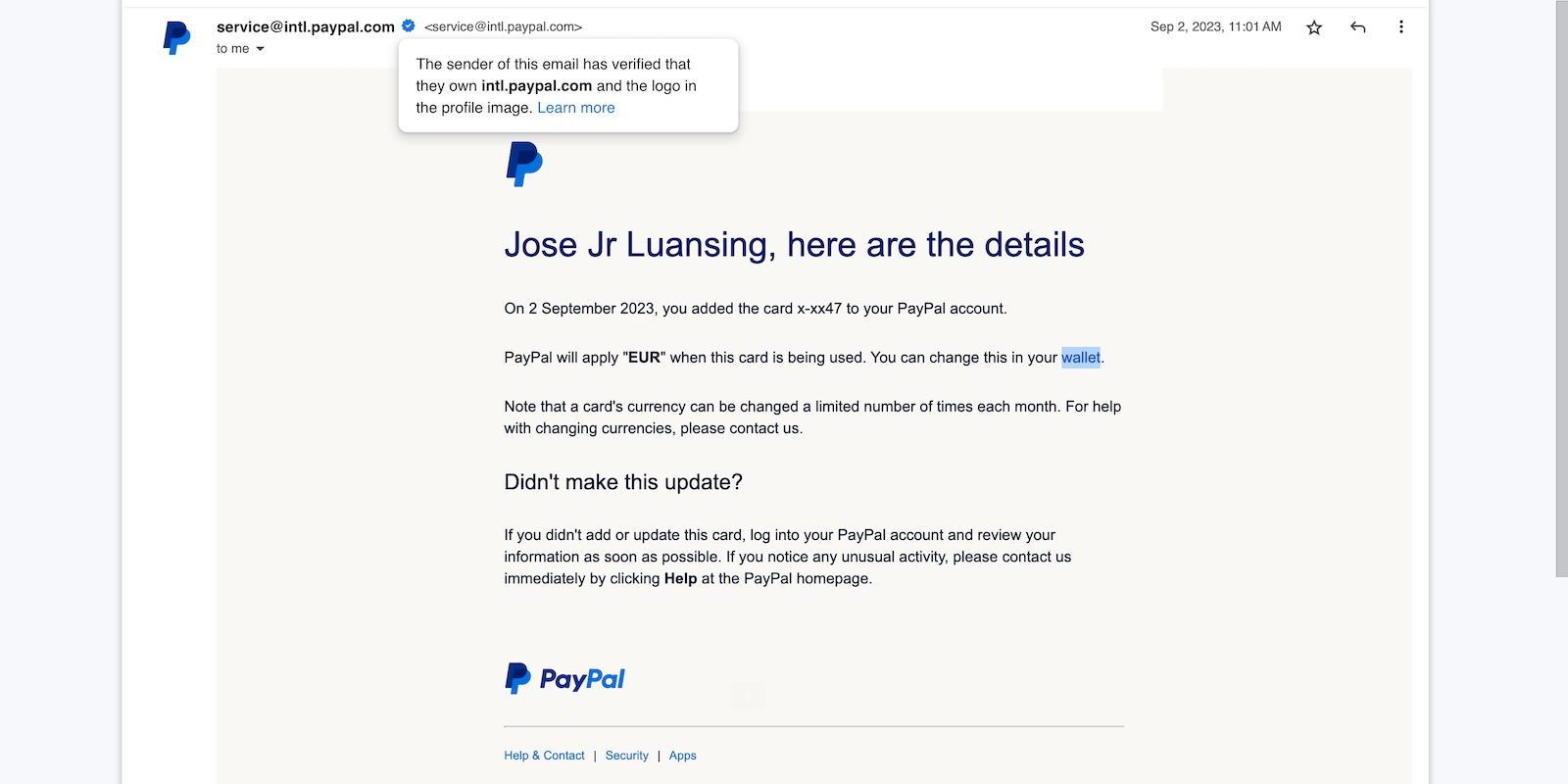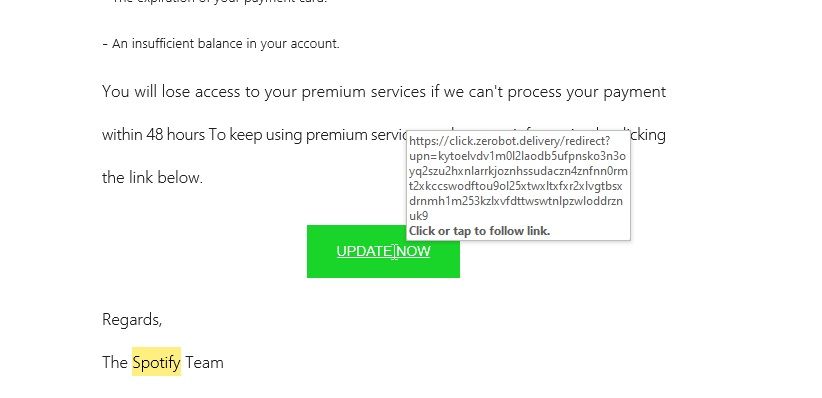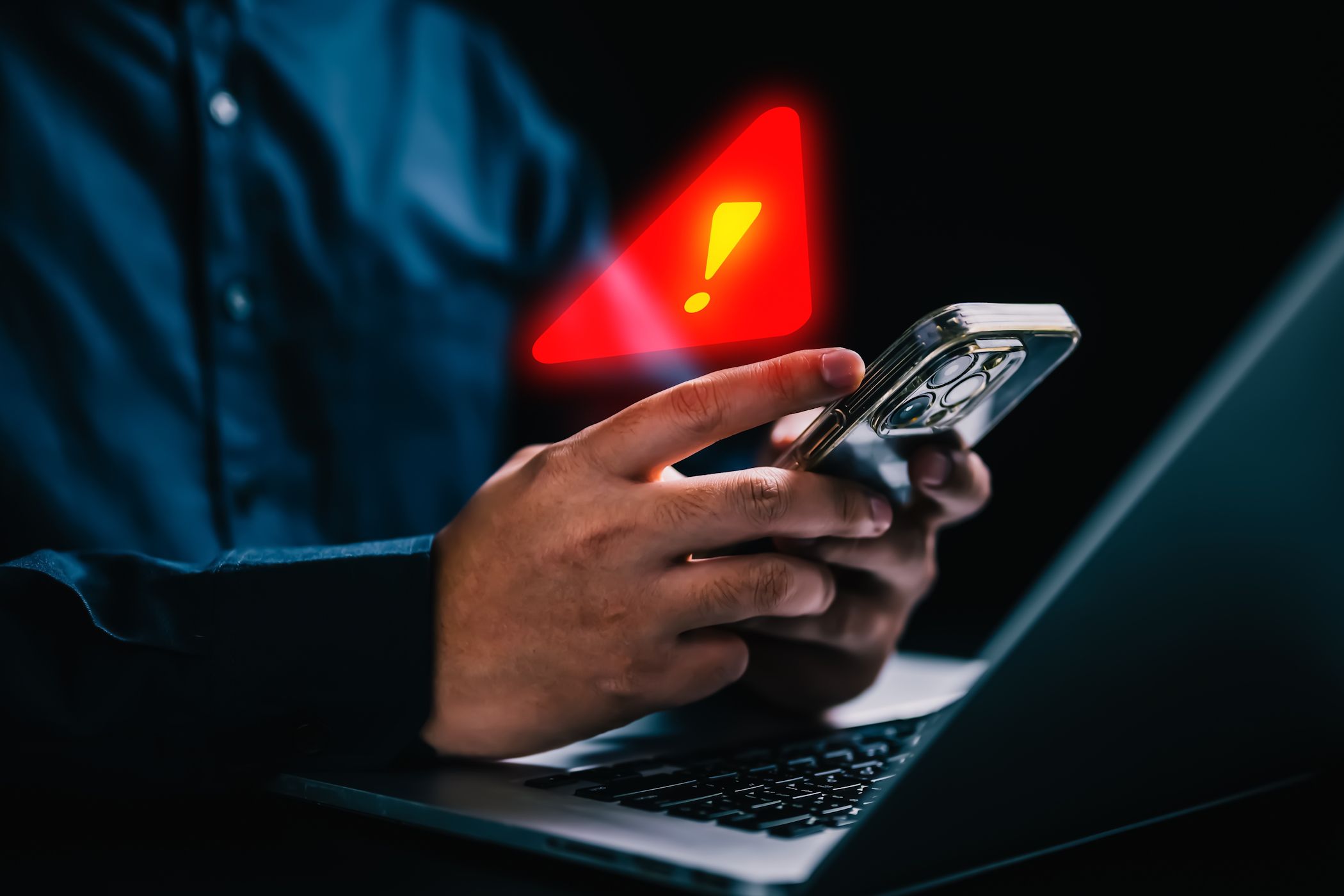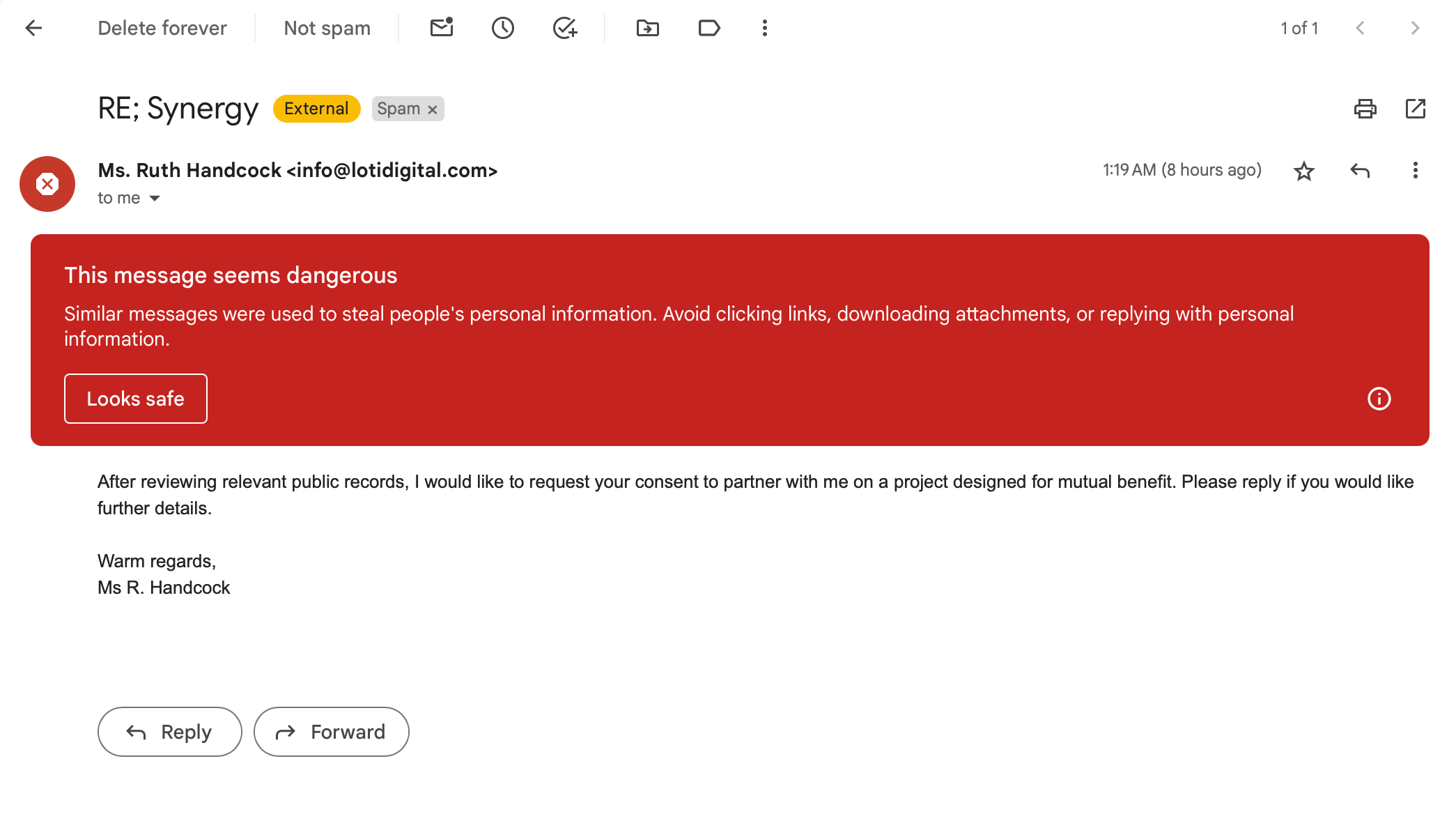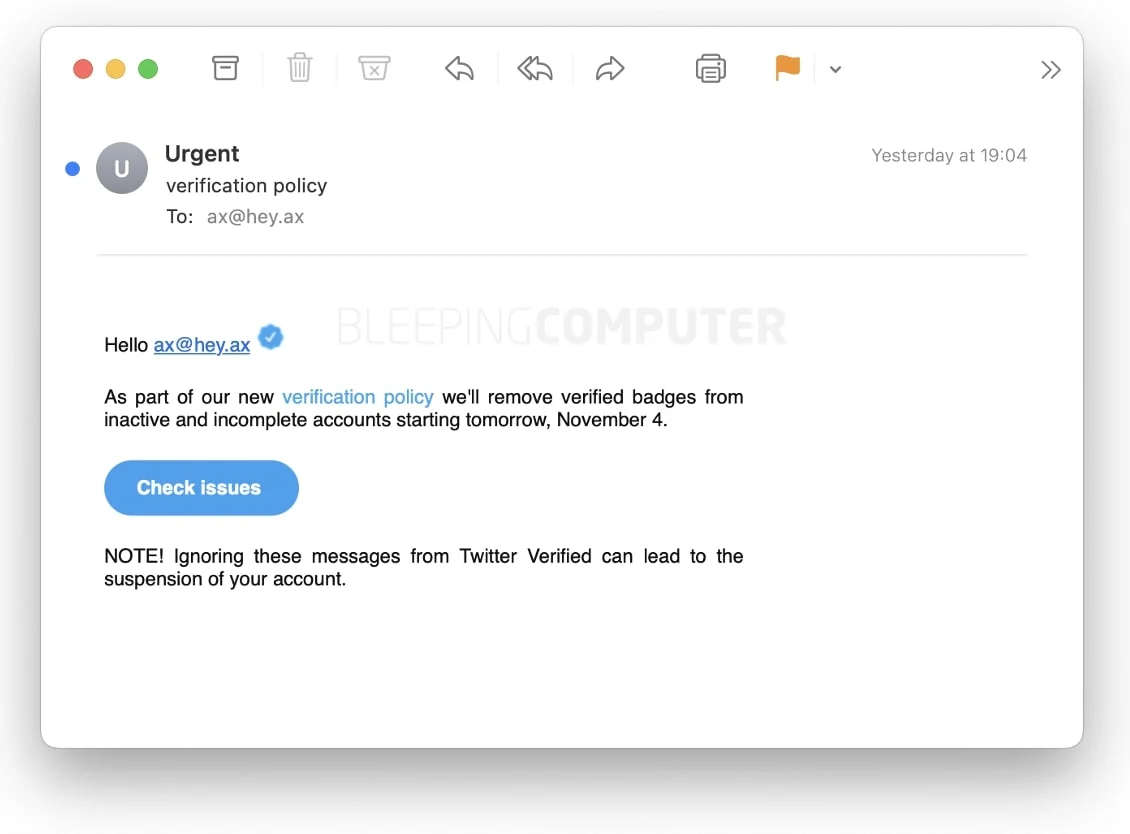[ad_1]
Being tech-savvy isn’t adequate to protect you from a phishing electronic message assault. Scammers are savvy and regularly evolve and develop new strategies, and it’s easy to fall sufferer.
Nonetheless with these tried-and-tested methods, I can spot phishing emails merely.
1 Unofficial Piece of email Addresses That Look Legit
Often, you will note electronic message addresses which is perhaps clearly fake. If they’re a bunch of random numbers and letters adopted by a provider’s space (e.g., @gmail.com or @outlook.com), I often ship them to my Trash folder with out contemplating twice. However, you will usually encounter fake electronic message addresses that look actual.
For example, at first look, I’ve acquired emails from my monetary establishment and eCommerce retailers which is perhaps onerous to inform other than the official space. Should you look nearer, though, you’ll uncover that some letters is maybe missing or have been added. Scammers often use associated letters and even the mannequin model as their profile picture.
Happily, it has develop to be less complicated to establish actual addresses. Many essential corporations have verified checkmarks subsequent to sender emails; you could want noticed this in Gmail. You possibly can even use plenty of devices to look out and ensure electronic message addresses.
2 Spelling and Grammatical Errors
Sadly, determining phishing emails primarily based totally on grammar has develop to be more durable as a result of generative AI and spell-checking software program program; that’s one among many strategies hackers use generative AI of their assaults. Nonetheless, I nonetheless take a look at for spelling and grammatical errors to search out out whether or not or not an electronic message is dependable.
Within the occasion that they haven’t been written by AI, phishing emails are almost always in harmful English. I acknowledge that I’m an area English speaker, and this supplies me an infinite profit, nonetheless I don’t suppose it is necessary to be to find out these indicators. Phishing emails not typically circulation successfully, and moreover, you’ll often uncover areas between letters and punctuation.
Most producers prioritize consistency; you’ll uncover the equivalent capitalization all via the message. However, since scammers often don’t, checking for consistency is a refined resolution to resolve whether or not or not an electronic message is dependable. If each phrase is capitalized inside the title nonetheless not in an electronic message’s headings or sub-headings, this is perhaps a purple flag.
Some phishing emails might also miss phrases (e.g., “Let’s assemble web page” as an alternative of “Let’s assemble an web website.” Incomplete sign-offs are one different potential purple flag, though this isn’t always the case.
3 Personalization
If I ever see an electronic message that begins with “Dear Sir / Madam,” I routinely delete it. At best, it’s an annoying scattergun electronic message that positively would not make me have to work with anyone. Nonetheless at worst, it is perhaps a phishing electronic message attempting to dupe me into sending delicate data—akin to my banking particulars.
Now, however, phishing emails have gotten somewhat extra non-public. It’s not uncommon for a sender to utilize your first establish, and they also may even go into factor to look out out particulars about your loved ones and associates. Because of this you must stay away from plenty of social media errors to protect your privateness.
Phishing electronic message senders might also try to find out your newest purchase historic previous. For example, I often receive spam emails when shopping for an merchandise on-line (and it always pertains to my parcel provide). These often embody a hyperlink with a reputation to movement (CTA).
You may also see phishing emails associated to merchandise you have an interest by. These types of scams are prevalent at explicit components all yr lengthy; as an illustration, it’s notably important to preserve shielded from scams in the middle of the holiday season.
4 Hyperlinks That Don’t Match the “Group”
Whereas some hyperlinks embody a CTA, this may increasingly not always be the case. Usually, a phishing electronic message sender will embody a hyperlink utterly unrelated to the group they’re impersonating. For example, anyone may fake to be Amazon nonetheless share a hyperlink for a particular app.
Happily, most of those phishing emails are lots less complicated to find out and stay away from. Firstly, most producers that contact you and embody hyperlinks will perhaps embody some type of CTA. Nonetheless even when they don’t, the hyperlink will go to their web page or the service they use to hint and ship orders.
Over-the-top CTAs, akin to plenty of emojis, is usually a warning sign that you just simply’re about to click on on on a phishing electronic message.
5 Fast Hyperlinks
Fast hyperlinks aren’t harmful in and of themselves; you’ll often see them used on social media. Nonetheless when receiving emails, I class shortened hyperlinks as an enormous purple flag—notably if I have no idea the sender.
If anyone’s going to ship a hyperlink by means of electronic message, I have to be sure that I do know the provision. Seeing random letters subsequent to at least one one other will not obtain my perception, and it means that anyone is attempting to take profit.
I strongly advocate not clicking on any temporary hyperlinks you see in emails and deleting the e-mail. If anyone’s attempting to impersonate a corporation, I often try sending it to their workforce to permit them to make totally different shoppers aware.
6 “This Message Appears to be Dangerous”
I primarily use Gmail, and thankfully, the app is great at warning me as soon as I is perhaps having a look at a most likely threatening electronic message. You’ll often see a message in purple that claims, “This message appears dangerous,” and no matter using the service for over 5 years, I’m however to see a time when it has been flawed about this.
When using Google Workspace, Gmail will warn you when anyone exterior your group sends you a message. Not all of these messages are dangerous, and in truth, most will seemingly be constructive—nonetheless within the occasion you are suspicious, you would wish to preserve this in ideas.
As AI evolves, it’s maybe harder for electronic message suppliers to flag messages as dangerous. So, realizing strategies to defend your self from AI Gmail scams—and doing the equivalent with totally different networks—is necessary.
7 The Language Used
I’ve noticed that many phishing emails try and create a approach of urgency. For example, I can’t lose rely of what variety of events anyone has requested me to ship money for an important surgical process. One different frequent phishing electronic message attempt I’ve seen is attempting to tell me that one among my subscription funds has failed; that’s notably powerful because of they’ve often impersonated the businesses I actually use.
Even within the occasion you have acquired a few years of promoting experience, these emails will probably be annoyingly persuasive. Other than verifying the sender, I try to not take movement on messages I ship with out first taking a step once more to suppose. Within the occasion you revisit a phishing electronic message, you’ll often uncover intricate particulars that’ll stop you falling sufferer to them.
Whereas phishing emails have gotten further superior, you’ll nonetheless often decide when a message is dependable. Maintain a be careful for spelling and grammatical errors, and take a look at all electronic message addresses sooner than replying. You have to even be very cautious sooner than clicking on hyperlinks.
[ad_2]
Provide hyperlink
